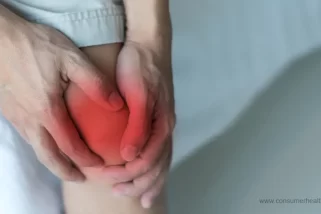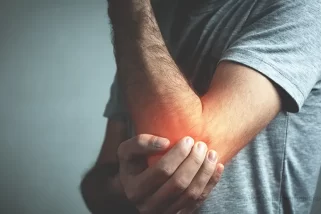A car accident is a scary experience that can have many implications beyond the initial shock and trauma. One of the more common health issues from an automobile collision is back pain, sharp or throbbing discomfort that makes daily tasks difficult and has serious implications for your quality of life. The sudden force of the collision can lead to tension in the muscles, ligaments, and soft tissues in the back. Whiplash, a common injury from car accidents, can also contribute to back pain.

The following are 11 tips to help those affected by a car accident effectively manage their back pain.
1. Seek Immediate Medical Attention
Some back injuries may not present immediate symptoms but can worsen over time. A medical professional will conduct a thorough examination and diagnostic tests to identify underlying issues. Follow their recommended treatment plan to promote healing and prevent long-term complications. Remember, timely medical intervention is key to addressing back pain effectively.
Seeking medical attention can also be important for filing an insurance claim or getting legal help. In addition, working with an experienced personal injury lawyer can help obtain evidence such as police reports and witness statements. They will also ensure you get the compensation you deserve[1].
2. Get Plenty of Rest
Be sure that you get enough sleep and take breaks throughout the day. Ensure you find a comfortable sleeping position that allows your back to relax and heal properly. Create a calming sleeping environment by ensuring the bedroom is quiet and dark. Avoid screen time at least an hour before bed, and avoid caffeine. Low-impact activities such as yoga or gentle stretching can help reduce stress and improve rest quality.
Additionally, take time off from work or demanding activities that require physical exertion. It can help minimize stress and prevent potential flares in back pain. Taking a break from regular tasks can also give your body adequate time to rest and heal without pressure or expectations.
3. Practice Good Posture
Practice sitting, standing, and walking upright, and align your shoulders with your ears while keeping your back straight. Place a cushion or rolled-up towel behind your lower back for additional support. Use a mattress that provides ample cushioning and support. This can help reduce discomfort and allow for deeper sleep quality which aids in recovery from injury.
Keep your head and neck aligned when using a computer or other electronic device. Doing so will promote better posture and help reduce stiffness in the back. Proper posture goes a long way in keeping the spine healthy, reducing back pain, and even preventing future injuries[2].
4. Engage in Gentle Exercise
Exercise helps reduce stiffness, improve flexibility in the spine, and boost circulation. Additionally, it releases endorphins which are hormones that help relieve pain naturally. Engage in gentle exercises recommended by your healthcare provider, like walking or stretching, to maintain flexibility and strengthen supporting muscles. Begin with simple stretches and gradually work up to more challenging movements as your body adjusts. Avoid over-strain yourself and listen carefully to your body’s cues while exercising.
5. Use Heat and Cold Therapy
Heat and cold therapy are two effective methods of pain relief commonly used in combination to treat back pain. Heat therapy increases circulation, which can be beneficial for reducing stiffness and increasing flexibility in the spine. Cold therapy numbs the affected area, reducing inflammation and providing immediate relief from pain. An ice pack wrapped in a cloth can be applied to your lower back for at least fifteen minutes to reduce swelling and promote healing[3].
Avoid applying heat or cold for over twenty minutes, as prolonged exposure can damage your skin or cause further discomfort. Always use a towel or cloth when applying heat and cold therapy to protect your skin.
6. Acupuncture
Telling about the significance of this traditional Chinese medicine technique, Dr. Jay Greenstein, Doctor of Chiropractic says that it involves inserting thin needles into specific points on the body. It is believed to stimulate the body’s natural painkillers and increase blood flow. Acupuncture has been found effective in reducing chronic pain, including in the back, neck, knees, and for conditions like osteoarthritis. It works by potentially altering the brain's pain processing areas and reducing inflammation.
Acupuncture is generally considered a safe form of therapy, but it’s important to seek professional help when considering this type of relief from back pain.
7. Medication
If the pain is severe and more conservative methods do not provide relief, your doctor may prescribe medications to manage your back pain. Stronger prescription medications may be prescribed if the discomfort is more intense or lasts for an extended period. Or your doctor may suggest a combination of drugs to aid in relief. Take all medication as instructed by your physician and never exceed the recommended dosage. Additionally, always communicate any side effects from taking these drugs to your doctor so they can make necessary adjustments.
8. Massage Therapy
Massage techniques such as Swedish massage, deep tissue massage, and trigger point therapy can target specific areas of tension and promote relaxation. Massage increases blood circulation, which aids in delivering oxygen and nutrients to the injured tissues, accelerating the healing process. It reduces inflammation and muscle spasms while releasing endorphins, natural pain-relieving hormones. Beyond immediate relief, massage therapy enhances flexibility, improves range of motion, and corrects posture, giving your back the support it needs.
9. Consider Chiropractic Care
Chiropractic care focuses on manual manipulation of the spine to realign the vertebrae and restore the balance between the body’s systems. It helps improve mobility, reduce inflammation, and promote natural healing in the affected area. Chiropractors are trained to identify underlying issues leading to back pain that standard medical treatments may overlook. Your chiropractor will use their hands or specialized devices to adjust your spine and properly align it with its surrounding joints. They may also recommend exercises, stretches, or lifestyle changes to support recovery. Be sure to choose a licensed and experienced chiropractor specializing in treating car accident injuries.
10. Yoga
Yoga is a holistic practice that combines various exercises and breathing techniques to improve physical and mental health. It helps increase flexibility, reduce stress levels, and promote relaxation. Yoga strengthens the back muscles, providing additional support for your spine. The poses also help open up areas of tightness and tension while aiding circulation around the affected site. Additionally, specific postures can be tailored to any injury or condition to maximize results safely and effectively. Focus on gentle poses that work for your condition instead of pressing yourself beyond your limits and causing further injury[4].
11. Surgery
Surgery is usually the last resort for car accident injuries that do not respond to other treatments. Depending on the location and severity of your injury, a surgeon may perform spinal fusion, diskectomy, or laminectomy procedures. Surgery helps reduce pressure on affected nerves and realigns any dislocated bone fragments[5].
Make sure to discuss all possible risks and benefits with your surgeon. Additionally, always seek out multiple opinions before undergoing any operation, as this will help ensure you get the best treatment for your specific condition. Take the necessary steps for proper recovery, including getting enough rest and following all post-operative instructions. Always seek a reputable surgeon with experience performing these types of operations.
Conclusion
It is essential to take the necessary steps toward healing, such as exercising, taking medications, or getting massage therapy, but ultimately the body needs time to repair itself. It’s essential to be patient with yourself and not push your body too hard if things don’t happen quickly enough. Have faith that you will eventually heal and trust in the recovery process. This positive attitude will help speed up progress and ensure long-term health. Be kind to yourself and practice self-care.
5 sources
We review published medical research in respected scientific journals to arrive at our conclusions about a product or health topic. This ensures the highest standard of scientific accuracy.
[1] Chicago Workers’ Compensation Lawyer: https://www.rosenfeldinjurylawyers.com/chicago-workers-compensation-lawyer/[2] How to improve your posture with a few tips and tools: https://www.businessinsider.com/guides/how-to-improve-posture?r=US&IR=T
[3] EFFECT OF COLD AND HEAT THERAPIES ON PAIN RELIEF IN PATIENTS WITH DELAYED ONSET MUSCLE SORENESS: A NETWORK META-ANALYSIS: https://www.ncbi.nlm.nih.gov/pmc/articles/PMC8862647/
[4] The safe way to do yoga for back pain: https://www.health.harvard.edu/staying-healthy/the-safe-way-to-do-yoga-for-back-pain
[5] Diskectomy: https://www.mayoclinic.org/tests-procedures/diskectomy/about/pac-20393837







 This article changed my life!
This article changed my life! This article was informative.
This article was informative. I have a medical question.
I have a medical question.
 This article contains incorrect information.
This article contains incorrect information. This article doesn’t have the information I’m looking for.
This article doesn’t have the information I’m looking for.